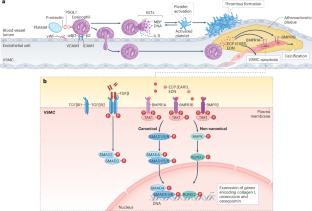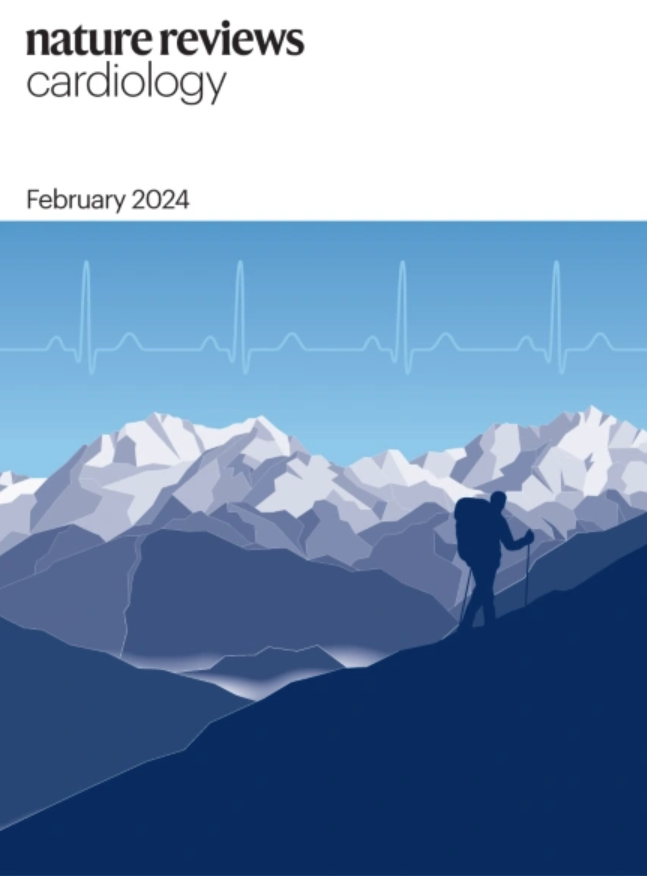Differential roles of eosinophils in cardiovascular disease
IF 41.7
1区 医学
Q1 CARDIAC & CARDIOVASCULAR SYSTEMS
引用次数: 0
Abstract
Eosinophils are essential innate immune cells in allergic responses. Accumulating evidence indicates that eosinophils also participate in the pathogenesis of cardiovascular diseases (CVDs). In clinical studies, high blood eosinophil counts and eosinophil cationic protein levels have been associated with an increased risk of CVD, including myocardial infarction (MI), cardiac hypertrophy, atrial fibrillation, abdominal aortic aneurysm (AAA) and atherosclerosis. However, low blood eosinophil counts have also been reported to be a risk factor for MI, heart failure, aortic dissection, AAA, deep vein thrombosis, pulmonary embolism and ischaemic stroke. Although these conflicting clinical observations remain unexplained, CVD status, timing of eosinophil data collection, and tissue eosinophil phenotypic and functional heterogeneities might account for these discrepancies. Preclinical studies suggest that eosinophils have protective actions in MI, cardiac hypertrophy, heart failure and AAA. By contrast, cationic proteins and platelet-activating factor from eosinophils have been shown to promote vascular smooth muscle cell proliferation, vascular calcification, thrombomodulin inactivation and platelet activation and aggregation, thereby exacerbating atherosclerosis, atrial fibrillation, thrombosis and associated complications. Therefore, eosinophils seem to promote calcification and thrombosis in chronic CVD but are protective in acute cardiovascular settings. In this Review, we summarize the available clinical and preclinical data on the different roles of eosinophils in CVD. In this Review, Shi and co-workers summarize the available evidence on the role of eosinophils in cardiovascular diseases, highlighting differences between preclinical and clinical findings and placing clinical data in the context of experimental data to discuss potential pathogenic or protective roles of eosinophils in different cardiovascular disease settings.


嗜酸性粒细胞在心血管疾病中的不同作用
嗜酸性粒细胞是过敏反应中必不可少的先天性免疫细胞。越来越多的证据表明,嗜酸性粒细胞也参与了心血管疾病(CVDs)的发病机制。在临床研究中,高血液嗜酸性粒细胞计数和嗜酸性粒细胞阳离子蛋白水平与心血管疾病(包括心肌梗死)、心脏肥大、心房颤动、腹主动脉瘤(AAA)和动脉粥样硬化的风险增加有关。然而,也有报道称,血液中嗜酸性粒细胞计数低也是心肌梗死、心力衰竭、主动脉夹层、腹主动脉瘤、深静脉血栓、肺栓塞和缺血性中风的危险因素。尽管这些相互矛盾的临床观察结果仍无法解释,但心血管疾病状态、嗜酸性粒细胞数据收集时间以及组织嗜酸性粒细胞表型和功能异质性可能是造成这些差异的原因。临床前研究表明,嗜酸性粒细胞对心肌梗死、心脏肥大、心力衰竭和 AAA 具有保护作用。相反,嗜酸性粒细胞中的阳离子蛋白和血小板活化因子已被证明可促进血管平滑肌细胞增殖、血管钙化、血栓调节蛋白失活以及血小板活化和聚集,从而加剧动脉粥样硬化、心房颤动、血栓形成和相关并发症。因此,在慢性心血管疾病中,嗜酸性粒细胞似乎会促进钙化和血栓形成,但在急性心血管疾病中却具有保护作用。在本综述中,我们总结了有关嗜酸性粒细胞在心血管疾病中不同作用的现有临床和临床前数据。
本文章由计算机程序翻译,如有差异,请以英文原文为准。
求助全文
约1分钟内获得全文
求助全文
来源期刊

Nature Reviews Cardiology
医学-心血管系统
CiteScore
53.10
自引率
0.60%
发文量
143
审稿时长
6-12 weeks
期刊介绍:
Nature Reviews Cardiology aims to be the go-to source for reviews and commentaries in the scientific and clinical communities it serves. Focused on providing authoritative and accessible articles enriched with clear figures and tables, the journal strives to offer unparalleled service to authors, referees, and readers, maximizing the usefulness and impact of each publication. It covers a broad range of content types, including Research Highlights, Comments, News & Views, Reviews, Consensus Statements, and Perspectives, catering to practising cardiologists and cardiovascular research scientists. Authored by renowned clinicians, academics, and researchers, the content targets readers in the biological and medical sciences, ensuring accessibility across various disciplines. In-depth Reviews offer up-to-date information, while Consensus Statements provide evidence-based recommendations. Perspectives and News & Views present topical discussions and opinions, and the Research Highlights section filters primary research from cardiovascular and general medical journals. As part of the Nature Reviews portfolio, Nature Reviews Cardiology maintains high standards and a wide reach.
 求助内容:
求助内容: 应助结果提醒方式:
应助结果提醒方式:


